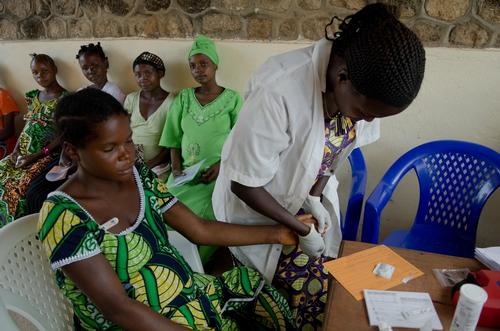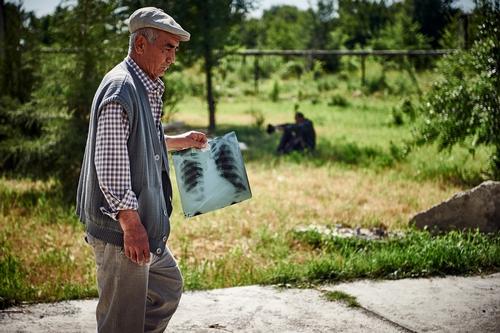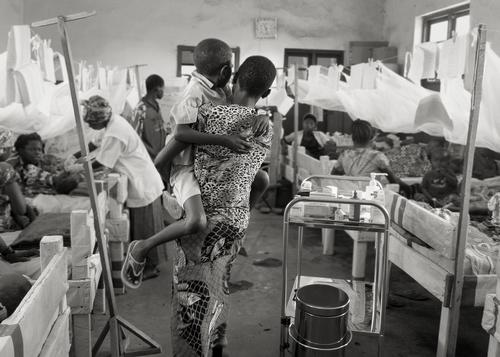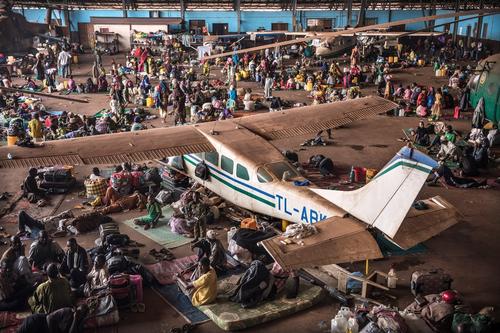This week world leaders meet in Montreal to renew their financial commitments to the Global Fund to fight AIDS, TB and Malaria, the largest international agency fighting the three diseases. Despite major progress, these epidemics still cause three million deaths every year. The actions taken by these leaders will be the first test of their resolve to end the epidemics by 2030 – a centrepiece of the world’s Sustainable Development Goals (SDGs), adopted just a year ago. There are no shortcuts to end the epidemics. To reach the goals, governments across the globe need to increase their financial commitments and put the strategies that we now work to combat these epidemics into action. Falling short of the Global Fund’s modest pledging target would not only seriously undermine progress, but also be costly, both financially and in terms of human lives lost.
Deaths from HIV, TB and malaria rarely make for powerful headlines. These deaths do not generate graphic media coverage of people dying, as is the case for wars or natural disasters. Instead, these diseases bring death in slow motion – but death nevertheless, and very often without any public outcry.

MSF teams currently bear witness to the cruel situation occurring in in West and Central Africa. In this region, where a third of all global AIDS deaths occur, barely a quarter of the 6.5 million people living with HIV have access to treatment. At an MSF hospital in Kinshasa, Democratic Republic of Congo (DRC), one in four people with HIV arrive when they are already too sick to be saved, as MSF’s Dr Maria Machako explains: “Every day, we see people arriving at our clinic desperate and penniless, in the late stages of the infection. For the poor, being diagnosed with HIV really is a death sentence.”
Every day, we see people arriving at our clinic desperate and penniless, in the late stages of the infection. For the poor, being diagnosed with HIV really is a death sentence.Dr Maria Machako
Although access to antiretroviral therapy has increased globally, over 50 per cent of people living with HIV have not started treatment – and the virus is still spreading. Over the past decade, 74 countries have seen rates of new infections rise.
To stem the HIV epidemic, UN agencies and research institutes are calling for an additional US$7 billion per year. Yet donor funding is now decreasing, from US$8.6 billion in 2014 to US$7.5 billion in 2015.
Funding is also dwindling for TB. It causes 1.5 million deaths a year, and a lack of urgency threatens progress. At the current rate, the Stop TB Partnership predicts that the 2030 SDG targets will not be reached until 2182.

New diagnostic tools and drugs to fight the world’s deadliest infectious disease have finally become available and they must be made affordable and accessible. Old, toxic and relatively ineffective treatment for drug-resistant forms of TB must be replaced and access accelerated, as only two per cent of all people with drug-resistant TB have access to new drugs.
While the 37 per cent reduction in new cases of malaria reported between 2000 and 2015 represents progress, there were still an estimated 214 million cases and nearly half a million deaths worldwide last year.
MSF teams still witness unacceptably high rates of malaria in countries such as DRC and Central African Republic. At the same time, the emergence of resistance to insecticides and antimalarial drugs is a serious threat to the gains made against the disease.

Gains against HIV, TB and malaria are fragile and further progress could stall without new resources. Yet many donors have withdrawn or reduced their health funding and poorer countries transitioning from low- to middle-income status are increasingly expected to finance their own healthcare. But in these countries – home to the majority of people affected by HIV, TB and malaria – access to health care is often limited and inequitable.
There is no doubt that sustained and increased overall financial investments in HIV, TB and malaria will be needed to reach internationally agreed SDG targets. But to meet them, the world must focus on meeting today’s urgent needs as a crucial first step. The Global Fund has been instrumental in enabling governments, health agencies and civil society groups to implement innovative strategies and pay for medicines and health workers. Working alongside its supported programmes, MSF teams have witnessed tangible and vital progress. This progress must continue.
Rich countries now need to step up to the mark and back their promises with action. The end goal is not a financial one. The ultimate goal is to prevent the preventable: unnecessary suffering and unacceptable loss of life.





